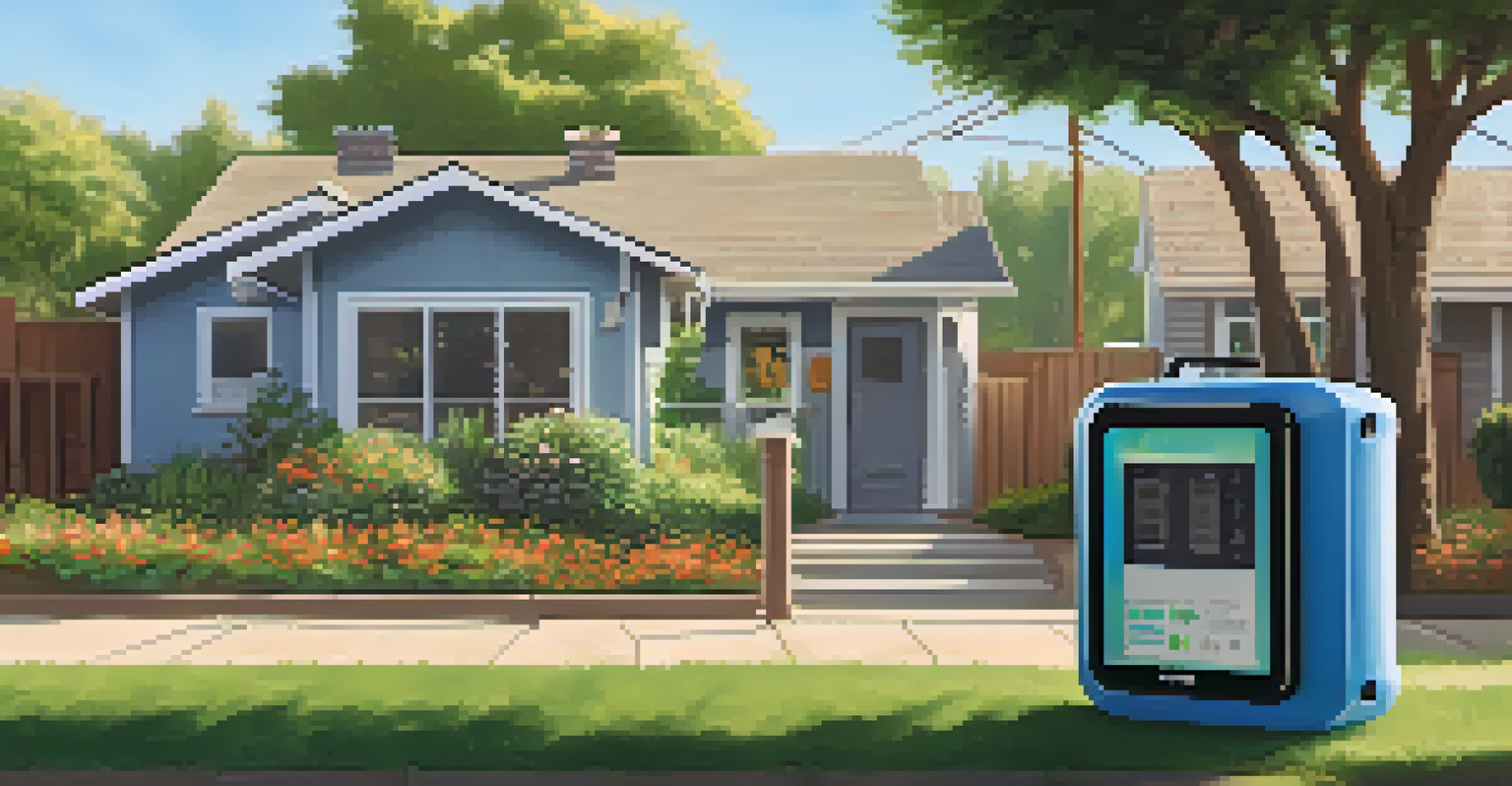Impact of Air Quality on Public Health in San Jose Area

Understanding Air Quality and Its Measurement
Air quality refers to the cleanliness of the air we breathe and is measured by the concentration of pollutants. Common pollutants include particulate matter (PM), nitrogen dioxide (NO2), and ozone (O3). In San Jose, air quality is monitored by various agencies using air quality index (AQI) ratings that help residents understand current conditions.
The air we breathe is the most essential element of our health, and we must work together to ensure its cleanliness.
The AQI scale ranges from good to hazardous, indicating how polluted the air is and what health effects might be of concern for the general public. For instance, an AQI of 0-50 is considered good, while levels above 300 are deemed hazardous. Understanding these measurements can empower residents to take action during poor air quality days.
In San Jose, factors such as traffic congestion, industrial emissions, and seasonal wildfires contribute to fluctuating air quality. By keeping track of these factors, residents can better protect themselves, especially those with preexisting health conditions.
Health Risks Associated with Poor Air Quality
Poor air quality can lead to a range of health issues, particularly respiratory problems like asthma and chronic obstructive pulmonary disease (COPD). Particulate matter, for example, can penetrate deep into the lungs and even enter the bloodstream, leading to serious health complications. This is particularly concerning for vulnerable populations such as children and the elderly.

Research indicates that long-term exposure to polluted air can increase the risk of heart disease, stroke, and lung cancer. In San Jose, residents exposed to high levels of pollutants often report more frequent hospital visits and respiratory infections. This not only affects individual health but can also strain local healthcare resources.
Air Quality Affects Health
Poor air quality can lead to serious health issues, particularly for vulnerable populations like children and the elderly.
Moreover, poor air quality can exacerbate existing health conditions, leading to a vicious cycle of deterioration. This highlights the importance of monitoring air quality and taking preventive measures, especially during high pollution days.
Vulnerable Populations in San Jose
Certain groups of people are more susceptible to the adverse effects of poor air quality. For instance, children’s lungs are still developing, making them particularly vulnerable to the harmful effects of pollutants. Similarly, older adults often have preexisting health conditions that can be worsened by poor air quality.
Clean air is a fundamental human right, and we must advocate for policies that protect our environment and health.
Low-income communities and neighborhoods near highways or industrial areas often face the brunt of air pollution. In San Jose, these populations may lack access to resources that can help mitigate exposure, such as air purifiers or health services, making it crucial to address these disparities.
Additionally, individuals with preexisting conditions like asthma or cardiovascular diseases must be especially cautious during poor air quality days. Public health initiatives focusing on these vulnerable groups can help reduce the impact of air pollution.
The Role of Local Government and Regulations
Local governments play a vital role in improving air quality through regulation and policy-making. In San Jose, the city has enacted measures to reduce vehicle emissions and promote public transportation, which can help decrease pollution levels. These initiatives are essential for fostering a healthier environment for all residents.
The Bay Area Air Quality Management District (BAAQMD) is also actively involved in monitoring and regulating air quality. They implement policies aimed at reducing emissions from industrial sources and promote community awareness regarding air quality issues. Such regulations can lead to significant improvements in public health over time.
Local Actions Improve Air Quality
Both individual and community efforts, such as reducing vehicle use and engaging in green initiatives, are essential for enhancing air quality.
Moreover, community engagement is crucial for the success of these initiatives. By encouraging residents to participate in local air quality programs, the government can foster a sense of responsibility and collective action toward cleaner air.
Individual Actions to Improve Air Quality
While government initiatives are crucial, individual actions can also make a significant difference in improving air quality. Simple steps like reducing car use, using public transport, or carpooling can greatly decrease vehicle emissions. Every small action counts toward a healthier environment.
Residents can also contribute by planting trees and maintaining green spaces, which help filter pollutants and improve air quality. Urban gardening and community clean-up projects not only beautify neighborhoods but also promote a sustainable lifestyle.
Moreover, staying informed about daily air quality levels allows individuals to take precautions on days when pollution is high. For instance, limiting outdoor activities or wearing masks can help reduce exposure, especially for those with respiratory issues.
Community Awareness and Education Programs
Education plays a crucial role in addressing air quality issues in San Jose. Community awareness programs can inform residents about the sources of pollution and the health risks associated with poor air quality. Schools, local organizations, and health agencies can collaborate to share information and resources.
Workshops and seminars can empower community members to take action, whether it's advocating for cleaner air policies or adopting healthier lifestyles. By understanding the impact of air quality, residents can become more proactive in protecting their health and the environment.
Government's Key Role in Regulation
Local governments and agencies are crucial in implementing policies and regulations that reduce pollution and promote public awareness.
Additionally, leveraging social media and local news outlets to spread awareness can engage a broader audience. When communities unite in their efforts for cleaner air, they can effectively influence change and improve public health outcomes.
Future Outlook for Air Quality in San Jose
The future of air quality in San Jose depends on continued efforts to reduce pollution and promote sustainable practices. With advancements in technology, there is hope for more efficient public transport systems and cleaner energy sources, which can significantly improve air quality. The city can also invest in green infrastructure to enhance urban spaces.
Long-term strategies and collaboration among government, businesses, and residents will be vital. As more people become aware of the importance of air quality, there’s potential for collective action that can lead to lasting change. The more engaged the community is, the more significant the impact.

Ultimately, improving air quality is a shared responsibility. By prioritizing health and sustainability, San Jose can pave the way for a healthier future, benefiting not only current residents but also generations to come.